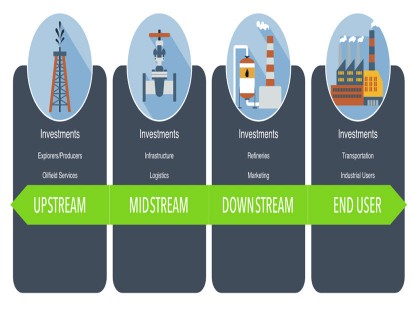Insights on Natural Gas Utilities and the Growing Industry
The Portfolio Managers of the Hennessy Gas Utility Fund discuss the production and demand dynamics of natural gas since the pandemic, including liquefied natural gas (LNG) exports and natural gas bans. They also provide an investment case for the Hennessy Gas Utility Fund.
-
 Ryan C. Kelley, CFAChief Investment Officer and Portfolio Manager
Ryan C. Kelley, CFAChief Investment Officer and Portfolio Manager -
 L. Joshua Wein, CAIAPortfolio Manager
L. Joshua Wein, CAIAPortfolio Manager
Would you please discuss the current growth in U.S. natural gas production and demand?
Since the pandemic, we have seen growth in the natural gas market. In fact, in 2022 the U.S. set a new annual record for volumes of natural gas consumed in the country. Importantly, despite the higher pricing environment last summer, there was not a reduction in demand.
On the production side, 2022 was another record year. Volumes produced in the U.S. grew about 4%, and gross dry gas production averaged 98.0 billion cubic feet per day (bcf/day) last year. In addition, the U.S. power sector set a record for average natural gas usage last year.
What do you anticipate for U.S. LNG shipping over the next several years?
The Russian war on Ukraine underscored the need for global energy security and alternative sources of natural gas. The U.S. stepped up, becoming a bedrock of European energy security, supplying the vast majority of new LNG supplies to Europe. Since 2016 when the U.S. first began exporting LNG from the lower 48 states, volumes have risen to about 13% of total dry gas production produced by the end of 2022. With this growth, the U.S. has become the world’s largest LNG exporter last year.
While exports from the U.S. are nearing capacity, once new projects are completed in 2024-2025, export capacity could increase to over 20 bcf/day. If the pricing environment in other parts of the globe remain elevated compared to North American prices, demand is expected to remain high.
Given the continued increase in demand for natural gas, would you please comment on the controversy surrounding natural gas bans?
Although certain legislative actions have tried to limit access to natural gas in the U.S., demand is still growing. In 2020, the number of new natural gas customers was at a 16-year high, and there were more than 1.5 million new residential natural gas customers added between 2019 and 2021.
There are also preemption policies in place and underway. Twenty states have laws that prohibit cities from banning the use of natural gas. Another 13 states are actively considering similar preemptive legislation.
The American Gas Association (AGA) continues to support a fact-based discussion on the role and the value of gas, both as an affordable consumer energy source and also as an environmental resource for municipalities to meet their environmental goals.
What is the current composition of the Hennessy Gas Utility Fund?
The Fund owns all of the publicly traded members of the AGA, covering over 95% of natural gas distribution in the U.S. By sector, the Fund holds about 30% multi-utility companies with both natural gas and electric, 25% energy pipelines and LNG export companies, 15% electric utilities with some natural gas operations, and 15% pure play natural gas utilities.
What is the Fund’s exposure to renewables?
The Fund primarily owns utilities, with about two-thirds having some exposure to renewables. Many of the Fund’s multi- and electric utilities are investing in wind and solar and increasing capacity to benefit from both an increase in capital expenditures and potential customer growth. With pure play natural gas utilities, the companies are diversifying into renewable natural gas and hydrogen blends.
Would you please discuss the case for investing in the Fund?
1. Steady and increasing dividends. 47 out of the Fund’s 50 holdings pay a dividend with an average yield of 3.8%.1 In addition, over the past three years, dividends have grown 5% annually on average.
2. Consistent earnings track record. Over the past 10 years, many Utilities have consistently experienced a 6-8% growth in earnings per share (EPS).
3. Attractive valuations. Historically, Utilities traded at a slight 3-5% premium to the overall market. Currently, they are trading at a slight discount: The S&P 500 Index had a price to earnings (P/E) of about 18x based on this year’s estimate, while Utilities were about 17.5x. Utilities also trade at a discount relative to history. Over the past 10 years, Utilities traded at about 18.4x.
4. Performance unrelated to interest rates. There has been no statistically significant correlation between the annual performance of the Fund and movements in interest rates since inception of the Fund in 1989.
In addition, we remain bullish on the macroenvironment for Utilities given the growing demand for energy, including natural gas, electricity, and renewables. Natural gas remains affordable, accessible, reliable, and scalable, traits that are valuable to both energy distribution companies and their customers.
- In this article:
- Energy
- Gas Utility Fund
1 Arithmetic average dividend yield is calculated as the sum of all dividend yields divided by the count of that series of numbers.
You might also like
-
 Investment Idea
Investment IdeaDefining the Energy "Value Chain"
 Ben Cook, CFAPortfolio ManagerRead the Investment Idea
Ben Cook, CFAPortfolio ManagerRead the Investment IdeaEnergy is a large and complex sector. The sector’s broad sub-industries can be divided into a “value chain,” each segment of which has different characteristics and offers different investment opportunities.
-
 Portfolio Perspective
Portfolio Perspective
Midstream FundWhat’s Driving Midstream Company Performance?
 Ben Cook, CFAPortfolio Manager
Ben Cook, CFAPortfolio Manager L. Joshua Wein, CAIAPortfolio ManagerRead the Commentary
L. Joshua Wein, CAIAPortfolio ManagerRead the CommentaryThe Portfolio Managers Ben Cook, CFA and Josh Wein share their insights on midstream companies’ strong performance over the past year, their shareholder-friendly capital allocation approach and current valuations.
-
 Portfolio Perspective
Portfolio Perspective
Energy Transition FundEnergy Transition Outlook 2025 – Key Investment Opportunities
 Ben Cook, CFAPortfolio Manager
Ben Cook, CFAPortfolio Manager L. Joshua Wein, CAIAPortfolio ManagerRead the Commentary
L. Joshua Wein, CAIAPortfolio ManagerRead the CommentaryThe U.S. continues to be an engine of growth when it comes to energy production. The following commentary summarizes the 2024 market and what to expect in the new year.
